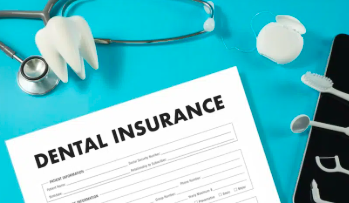Key Takeaways
- Understand your dental plan’s coverage, limitations, and exclusions.
- Make use of preventive care services to avoid higher costs later.
- Use in-network providers to minimize out-of-pocket expenses.
- Plan your treatments strategically, leveraging your yearly maximum benefits.
- Stay informed about your plan’s specifics, update regularly, and ask questions when in doubt.
Dental insurance in California is an essential buffer, safeguarding you against prohibitive oral health care expenses. These plans are designed to alleviate costs associated with dental maintenance, yet many individuals need to leverage their full potential.
Misunderstandings about the intricacies of dental insurance could mean missing out on potential savings and optimal oral health care. This comprehensive guide aims to elucidate how to maximize dental insurance benefits, ensuring you capitalize on every opportunity your plan offers.
By understanding your plan and strategically planning your visits and procedures, you can maintain dental health without compromising on cost.
Understand Your Coverage
Deciphering the coverage your dental plan provides is pivotal in maximizing its advantages. Start by reviewing your policy documents, focusing on the breadth of coverage your plan includes for preventive, primary, and significant services.
Each plan delineates these categories differently, influencing which treatments are accessible at full or partial coverage. For instance, while preventive care such as cleanings and exams might be fully covered, more extensive procedures might have shared costs.
Especially if you’re contemplating dental insurance, it’s crucial to investigate specific state provisions that might affect your coverage details.
Take Advantage of Preventive Care
Preventive care is the backbone of a cost-effective dental health strategy. Most insurance plans offer comprehensive coverage for routine preventive services, including cleanings, check-ups, and X-rays.
These services are not just about maintaining oral hygiene—they are crucial in detecting potential issues before they escalate, thereby avoiding more expensive treatments. Regular preventive care ensures you utilize your benefits fully while sustaining optimal dental health.
By addressing possible problems early through these free or low-cost services, you maintain a healthy mouth and preempt unforeseen, high-cost dental interventions.
Use In-Network Providers
Maximizing your dental insurance benefits often hinges on selecting in-network providers. Insurance plans commonly have a network of approved dentists who offer services at negotiated rates.
Opting for in-network services minimizes your financial liability, as out-of-network providers typically incur higher out-of-pocket expenses. Confirm that your current dentist is part of your plan’s network to maximize savings or find a suitable alternative.
In-network providers are inclined to follow the predetermined fees set by the insurers, providing predictability in dental expenditures and easing the financial burden associated with more costly procedures.
Strategic Scheduling
Strategic scheduling of dental services is vital to harness the full potential of your dental insurance benefits. Take note of the annual benefit maximum of your plan, which is the cap on what your insurance will pay in a calendar year.
If you anticipate needing multiple treatments, stagger them across different years to maximize the usage of these benefits. For instance, if you anticipate extensive dental work, begin some procedures late in the year and complete them early the next, utilizing two separate benefit periods.
This strategy ensures you don’t stay within your yearly cap, effectively distributing costs and optimizing the care you receive.
Communicate With Your Insurance Provider
Open communication with your insurance provider is vital. Feel free to clarify any doubts regarding your policy, from covered services to reimbursement processes.
Engage with customer service representatives to gain insight into your plan’s potential updates and ask specific questions to ensure a clear understanding of your benefits. This proactive approach allows you to plan accordingly, harnessing the full spectrum of services your policy offers.
Staying in regular contact with your provider ensures you remain abreast of any changes, allowing you to adapt your dental care strategies efficiently and not miss out on available benefits.
Stay Updated
Insurance providers periodically revise their policies, potentially altering coverage aspects and benefits. Keeping updated on these changes is crucial for fully leveraging your dental insurance. Routinely review policy documents and communications from your insurer to stay informed.
Understanding any modifications to terms or benefits ensures you continue to operate within your policy’s constraints, making well-informed decisions about your dental care.
This proactive behavior not only preserves your financial interests but also maximizes the effectiveness of your insurance coverage, ensuring an uninterrupted and advantageous use of your dental benefits.
Coordinating Dual Coverage
For individuals with access to multiple dental insurance plans—for example, through a spouse—coordinating dual coverage effectively can enhance coverage scope and reduce out-of-pocket costs. Understanding primary versus secondary coverage helps ensure both policies work harmoniously to cover expenses.
While navigating dual coverage may seem complex initially, aligning the terms and coverage specifics of both plans allows for strategic use of benefits, minimizing financial liability. It’s critical to comprehend the coordination of benefits to prevent coverage overlaps or misunderstandings, optimizing every possible advantage your dual plans provide.
Conclusion
Getting the most out of your dental insurance benefits isn’t the only goal; it’s also about ensuring you get the best care possible without worrying about extra costs. The first thing to do is to understand your insurance coverage.
You can significantly improve your health and finances by utilizing preventive care, selecting in-network doctors, carefully planning your treatment schedule, and remaining aware of the nuances of your plan.
Every action you take, whether coordinating coverage across several plans or speaking with your insurer directly, allows you to take proactive control of your dental health and ensure a financially stable and health-conscious future.
Recommended Articles
Motor Winding: The Key to Efficient Electrical Machines
Understanding Gut-Brain Connection



